
Karen Louise Erdrich is a Native American author of novels, poetry, and children's books featuring Native American characters and settings. She is an enrolled citizen of the Turtle Mountain Band of Chippewa Indians of North Dakota, a federally recognized Ojibwe people.

Zuleika Dobson, full title Zuleika Dobson, or, an Oxford love story, is the only novel by English essayist Max Beerbohm, a satire of undergraduate life at Oxford published in 1911. It includes the famous line "Death cancels all engagements" and presents a corrosive view of Edwardian Oxford.
Michael Anthony Dorris was an American novelist and scholar who was the first Chair of the Native American Studies program at Dartmouth College. His works include the novel A Yellow Raft in Blue Water (1987) and the memoir The Broken Cord (1989).

Clovis Dardentor is an 1896 fiction novel by French writer Jules Verne, written partly as a travel narrative. Compared to other Verne novels, it is a relatively unknown work.

Love Medicine is Louise Erdrich's debut novel, first published in 1984 by Holt. Erdrich revised and expanded the novel in subsequent 1993 and 2009 editions. The book follows the lives of five interconnected Ojibwe families living on fictional reservations in Minnesota and North Dakota. The collection of short stories in the book spans six decades from the 1930s to the 1980s. Love Medicine garnered critical praise and won numerous awards, including the 1984 National Book Critics Circle Award.

The Master Butchers Singing Club is a 2003 novel by American author Louise Erdrich. It follows the lives of German immigrants Fidelis Waldvogel and his family, as well as Delphine Watzka and her partner Cyprian, as they adjust in their separate lives in the small town of Argus, North Dakota. Bookended by World War I, which Fidelis and Cyprian fought in, and World War II, which Fidelis' children fight in, the title contains several overarching themes including family, tradition, loss, betrayal, and memory, to name a few.

Louis Lambert is an 1832 novel by French novelist and playwright Honoré de Balzac (1799–1850), included in the Études philosophiques section of his novel sequence La Comédie humaine. Set mostly in a school at Vendôme, it examines the life and theories of a boy genius fascinated by the Swedish philosopher Emanuel Swedenborg (1688–1772).
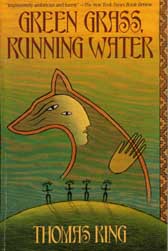
Green Grass, Running Water is a 1993 novel by Thomas King, a writer of Cherokee and Greek/German-American descent, and United States and Canadian dual citizenship. He was born and grew up in the United States, and has lived in Canada since 1980. The novel is set in a contemporary First Nations Blackfoot community in Alberta, Canada. It gained attention due to its unique use of structure, narrative, and the fusion of oral and written literary traditions. The novel is rife with humor and satire, particularly regarding Judeo-Christian beliefs as well as Western government and society. Green Grass, Running Water was a finalist for the 1993 Governor General's Award in Fiction.

The Round House is a novel by the American writer Louise Erdrich first published on October 2, 2012 by HarperCollins. The Round House is Erdrich's 14th novel and is part of her "justice trilogy" of novels, which includes The Plague of Doves released in 2008 and LaRose in 2016. The Round House follows the story of Joe Coutts, a 13-year-old boy who is frustrated with the poor investigation into his mother's gruesome attack and sets out to find his mother's attacker with the help of his best friends, Cappy, Angus, and Zack. Like most of Erdrich's other works, The Round House is set on an Ojibwe reservation in North Dakota.
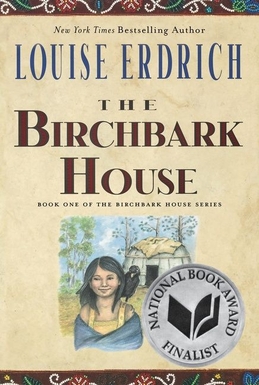
The Birchbark House is a 1999 indigenous juvenile realistic fiction novel by Louise Erdrich, and is the first book in a five book series known as The Birchbark series. The story follows the life of Omakayas and her Ojibwe community beginning in 1847 near present-day Lake Superior. The Birchbark House has received positive reviews and was a 1999 National Book Award Finalist for young people's fiction.
List of works by or about American author Louise Erdrich.
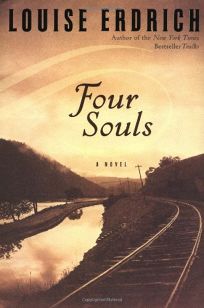
Four Souls (2004) is an entry in the Love Medicine series by Chippewa (Ojibwe) author Louise Erdrich. It was written after The Master Butcher’s Singing Club (2003) and before The Painted Drum (2005); however, the events of Four Souls take place after Tracks (1988). Four Souls follows Fleur Pillager, an Ojibwe woman, in her quest for revenge against the white man who stole her ancestral land. Fleur appears in many books in the series, and this novel takes place directly after her departure from the Little No Horse reservation at the end of Tracks. The novel is narrated by three characters, Nanapush, Polly Elizabeth, and Margaret, with Nanapush narrating all of the odd numbered chapters and Polly Elizabeth taking all but the last two even numbered chapters.
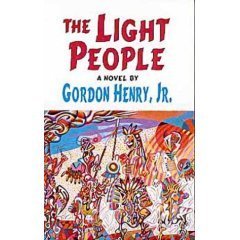
The Light People is a 1994 novel written by Gordon Henry. The book won the American Book Award in 1995. The Light People is a work of Native American fiction, composed of many distinct but ultimately interconnected stories happening in and around an Ojibwe village in northern Minnesota, and the Twin Cities.
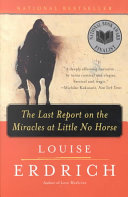
The Last Report on the Miracles at Little No Horse, first published in 2001, is a novel by author Louise Erdrich. The novel tells the story of Agnes DeWitt as Father Damien, the reverend who becomes part of the reservation community. Erdrich's narration alternates between Agnes’ early 20th-century memories and a series of interviews set in 1996 wherein another priest questions Damien about the possible canonization of Pauline Puyat.
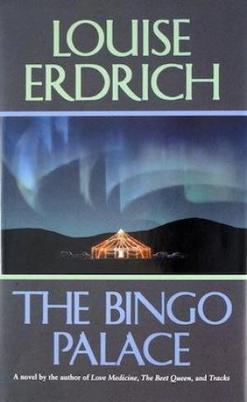
The Bingo Palace is a novel written by Louise Erdrich published in 1994, with three chapters appearing in the Georgia Review, The New Yorker, and Granta. It is the fourth novel in Erdrich's Love Medicine series, and it follows Lipsha Morrissey as he is summoned home by his grandmother Lulu Lamartine. He returns home to the reservation for the first time in years and finds himself in rapture of a woman named Shawnee Ray. The novel discusses themes of family and identity from an Anishinaabe perspective.

The Plague of Doves is a 2008 New York Times bestseller and the first entry in a loosely-connected trilogy by Ojibwe author Louise Erdrich. The Plague of Doves follows the townsfolk of the fictional Pluto, North Dakota, who are plagued by a farming family's unsolved murder from generations prior. The novel incorporates Erdrich's multiple narrator trope that is present in other works including the Love Medicine series. Its sequel is the National Book Award winning novel The Round House. Erdrich concluded the "Justice" trilogy with LaRose in 2016.
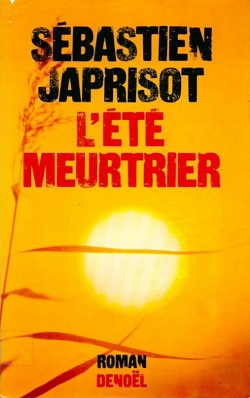
One Deadly Summer is a psychological suspense novel by Sébastien Japrisot, originally published in French as L'Été meurtrier in 1977. It received the 1978 Prix des Deux Magots in France. Japrisot also scripted the 1983 film adaptation directed by Jean Becker and starring Isabelle Adjani.
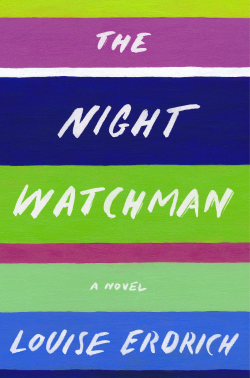
The Night Watchman is a novel by Louise Erdrich first published on March 3, 2020, by HarperCollins. The novel is set in the 1950s. This is Erdrich's sixth standalone novel following Future Home of the Living God. The novel was inspired by the life of Erdrich's grandfather who motivated and inspired other members of the Turtle Mountain Reservation to resist the Indian termination policies of the 1940s-1960s. The Night Watchman is the first novel that Erdrich has written that is set on the Turtle Mountain Reservation.

Chickadee is a 2012 historical fiction novel by American author Louise Erdrich, the fourth book in The Birchbark House series. Moving the story fourteen years into the future, the novel follows Omakaya's twin sons, Chickadee and Makoons, as the family moves further into the Great Plains. When Chickadee is kidnapped, he embarks on a journey to reunite with his family against a backdrop of American westward expansion.
The Sentence is a 2021 novel by American author Louise Erdrich.

















